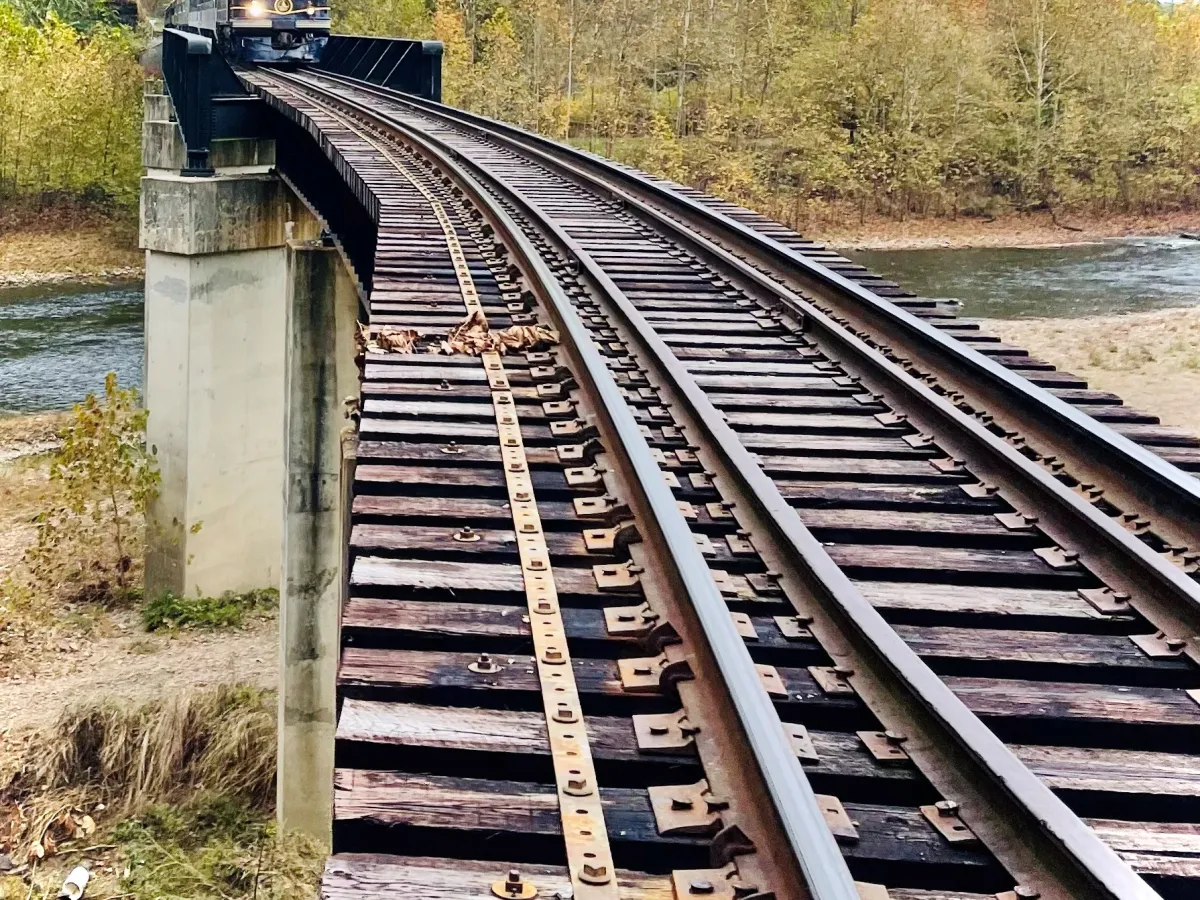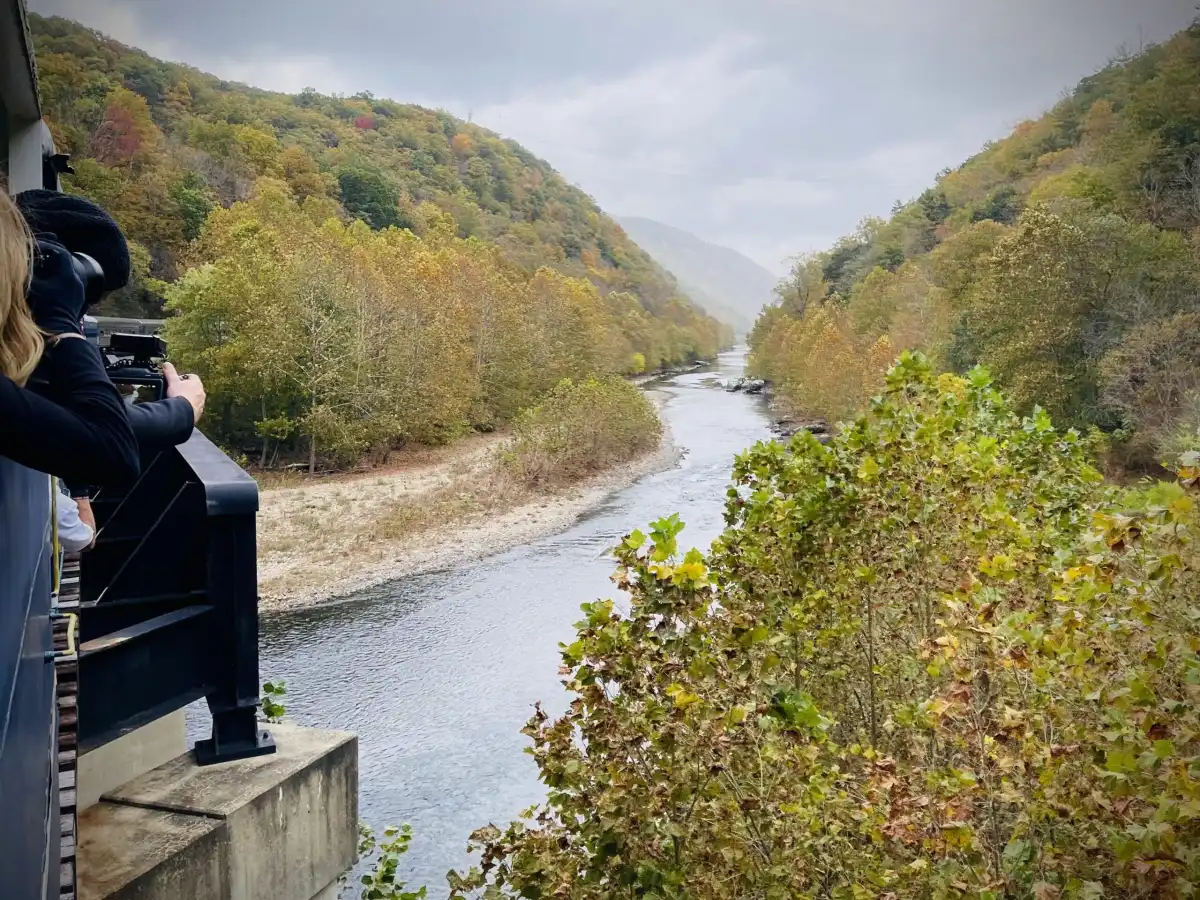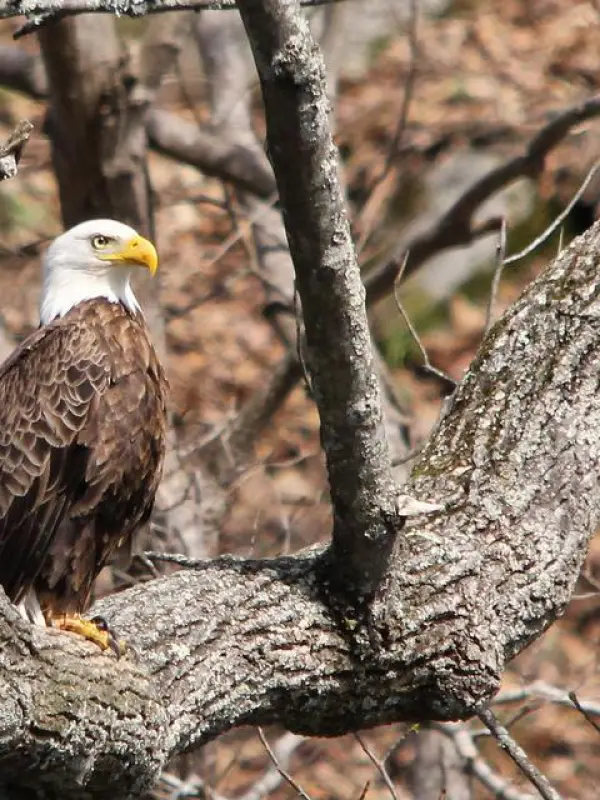Journey across rolling countryside to the remote and rugged Trough Canyon. Carved by the South Branch Potomac River, it is one of West Virginia’s very own “Grand Little Canyons.” George Washington referred to the canyon as “The Trough” after a surveying expedition in 1748, and later on, the canyon was the scene of a bloody battle of the French and Indian War.
Modern Trough history has witnessed the return of the American bald eagles who soar and play and nest in their GRAND home. These resilient raptors were once on the Federal Endangered Species list from the impact of pesticide poisoning known as DDT. With the banning of DDT in the 1970s, the eagles had recovered and returned to greet Potomac Eagle upon her 1991 maiden cruise
The canyon’s steep, heavily forested walls and rocky outcrops above the South Branch waters provide essential habitat and diet for the eagles. It is a thrill to spy these resilient raptors among the trees, hunting, or feeding their young.
Bring your binoculars and camera as this is a great outdoor adventure with wonderful photography and unique birding opportunities. Immerse yourself in nature aboard our open top gondola as you cross the South Branch at Sycamore Bridge and see the same view as George Washington so long ago! 3-hour round trips 35 miles southbound to Sycamore Bridge, no layover.

The Railroad
The South Branch Valley Railroad is a State-owned, commercial freight railroad, which has served the counties of Hampshire, Hardy, and Grant for 100 years to support their agricultural, forest products, plastics, and lime industries. This shortline is 52 miles long and unique in that it is the only railroad in West Virginia that has never hauled coal, and it is the only open range railroad in the East meaning cattle and deer often cross the tracks. The Potomac Eagle Scenic Railroad has served the tourism industry as an excursion train by promoting the area’s history as well as the wild and rugged beauty of the West Virginia Potomac Highlands for the last thirty years.

The Canyon
The Trough was named by the “Father of our Country” George Washington, during his 1748 surveying expedition as he gazed into the canyon and declared it was impassable beyond. In 1756, a band of Shawnee defeated European settlers in a bloody skirmish known as the Battle of the Trough during the French and Indian War. This six-mile long canyon has steep, forested walls and is part of the Appalachian Forest National Heritage Area. Hardwood species, primarily of oak and hickory, blend with evergreens to create an abundant forest biodiversity. Spectacular cliffs and rock outcrops along ridgelines create the unique canyon ecosystem. Passengers commonly view songbirds, waterfowl, raptors, turkey vultures, deer, black bears, wild turkeys, and turtles.

The South Branch of the Potomac River
Drawing from the Appalachian hills of Virginia, this river then flows through West Virginia to its confluence with the North Branch at Green Spring, where it forms the historic Potomac. The South Branch carves through Trough Canyon and completes this rugged and wild ecosystem with its pristine waters which offer premier float trips and exceptional smallmouth bass fishing. Indeed, this watershed has influenced history as well as cultural and wildlife diversity from its headwaters to the Chesapeake Bay and on to the Atlantic Ocean. Our station name, Wappocomo, is a variation of a Native American word referring to the beautiful South Branch River.

The American Bald Eagle
The bald eagle is our national bird and a symbol of freedom, bravery, and power. These resilient raptors were once on the Endangered Species list from the impact of pesticide poisoning known as DDT. This poison passed through the food chain causing egg shells to be weak and collapse, so infant mortality rates soared, and the eagle population crashed. With the banning of DDT in the 1970s, the eagles had recovered and returned to greet Potomac Eagle upon her 1991 maiden cruise. They reign as “King of the Sky” and soar, hunt, and nest in their canyon home. South Branch waters provide essential fishing grounds and the canyon’s rocky, forested walls are their preferred nesting habitat. As a keystone species, eagles are important components of the canyon ecosystem and are indicator species of a healthy river environment.
Did you know bald eagles are monogamous animals that mate for life? Family interactions can be observed throughout the year so it’s a great life cycle study. From nest constructing and repairing, the process often called “nestoration,” during late fall/ winter, to spring nesting, hatch (pip), and fledge (flight), their life history is part of the canyon environment. Fledglings stay with their parents (and are often seen at the nests together) who feed them for the next several weeks of the summer season until they are around five months. The parents will continue to provide food until the young are independent. The juveniles will go through several color changes and molts until about five years of age when they display the “bald heads” and look for mates to continue the life cycle.

